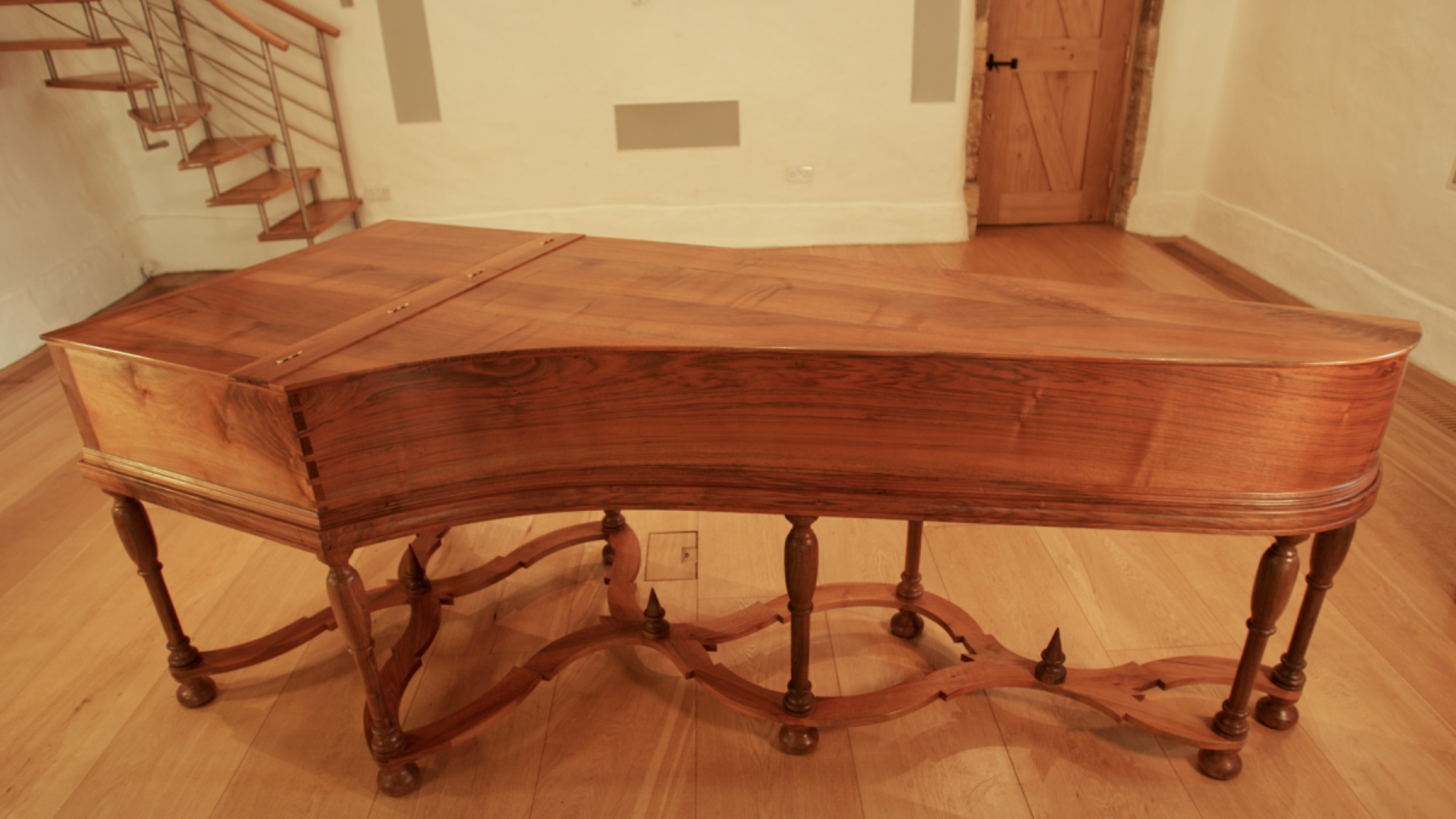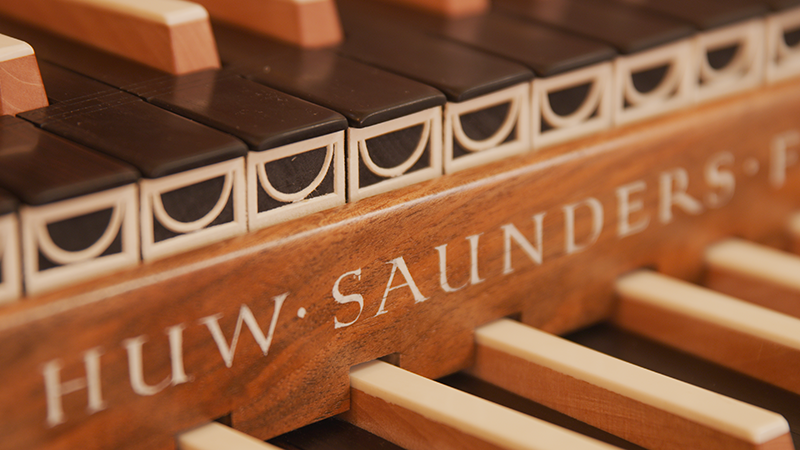

The German double is based on one made by Johann Heinrich Harrass around 1710, now in the Schloss Museum in Sondershausen, Thuringia. Of the two surviving Harrass harpsichords I chose to base my version on this one rather than the one in Berlin as the latter has been so much altered over the years that it is not possible to determine what its original disposition was. On the other hand, the Berlin instrument is thought to have belonged to J S Bach, and to have been given by him to his son Wilhelm Friedemann.
Harrass worked in Gross Breitenbach, south of Weimar, but may have learnt his trade elsewhere because the instrument contains a very interesting amalgam of styles and practices. The case, and especially the bent-side, is comparatively thin, probably to make bending the tail easier, but it is sturdily braced in rather an Italianate manner (like some other German instruments). There are also some characteristics of the Flemish school. The disposition is two 8 foot choirs, one 4 foot, with a shove coupler typical of the later French expressive doubles, and this arrangement together with the five octave compass (FF to f''') make it a surprisingly modern instrument for its date. On the other hand, the barring of the soundboard, and the effect that that has on the sound, suggest earlier practice. There is a buff stop on the front 8 foot. At 8 feet long it is among the largest harpsichords, but it is not as heavy as might be expected.
The sound is very big and rich, as one would expect from such a generously proportioned instrument, with a distinct character in each part of the compass. The treble is very flutey and sweet, and the 4 foot would sound good as a solo stop right to the top of the compass. The bass is rich and well-focussed, and the tone has strong fundamentals throughout, but with much more bite than would be expected on a French double. It is strung with Stephen Birkett's brass wire and P-wire (iron) and quilled using goose feathers. It is transposable to A440 or A415.
The case is made of English walnut (the original was beech) and the keyboard has ebony naturals and bone-topped hawthorn sharps. The stand (which can be dismantled) is the same design as the one I made for the Mietke single, but the extra length of the case means that the rococo stretchers flow a bit better. I have also put some finials on the crossings – rather reminiscent of a Pickelhauber I think.
This harpsichord was used by Mahan Esfahani for his recording of J S Bach's Goldberg Variations (Deutsche Grammophon - 479 5929), and also his soon to be released Book 1 of the Well-Tempered Clavier (Hyperion CDA68451/2). He says: “This instrument has a voice of its own – subtle, responsive, capable of colour and drama. I’ve never played a harpsichord that seems to know what I want to say before I do.”